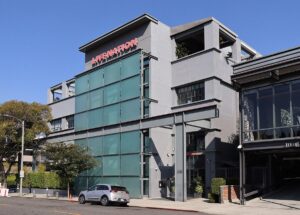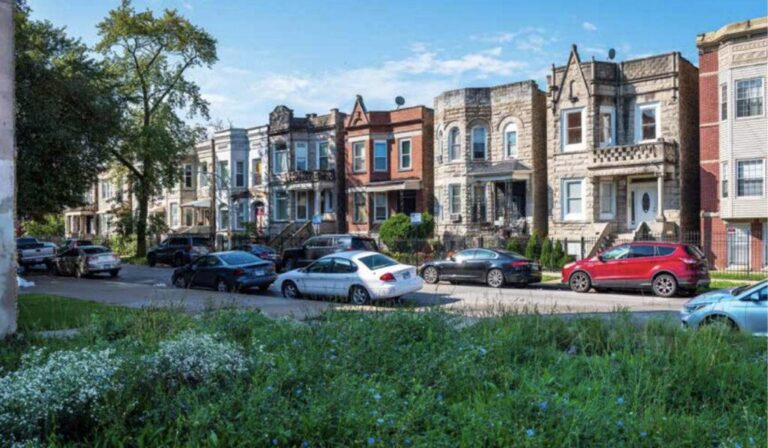Chicago Advances Affordable Housing with $39 Million Missing Middle Development on South Side
Expanding Mid-Density Housing: A Collaborative Effort to Bridge the Gap
In a bold move to alleviate the shortage of affordable housing, Chicago has entrusted six innovative developers with a $39 million fund dedicated to expanding “Missing Middle” housing on the South Side. This initiative targets the creation of mid-scale residential buildings that fill the void between traditional single-family homes and large apartment complexes, offering a balanced housing solution that respects neighborhood aesthetics while increasing affordability.
The selected developers will focus on constructing multi-unit dwellings such as townhomes, duplexes, and small apartment buildings that integrate harmoniously into existing communities. This approach aims to foster neighborhood stability, prevent displacement, and promote inclusive growth.
Core components of the program include:
- Investment in low-rise, multi-family housing designs that complement local architectural styles
- Incentives encouraging the inclusion of affordable units within mixed-income developments
- Engagement with community stakeholders to ensure equitable and culturally sensitive development
- Streamlined permitting and approval processes to expedite project delivery
| Developer | Housing Type | Planned Units |
|---|---|---|
| Riverfront Builders | Townhouses & Duplexes | 45 |
| Greenhaven Co. | Triplexes & Fourplexes | 60 |
| South Side Urban Dev | Mixed-use Residential | 55 |
Addressing Housing Inequities Through Targeted Investments
Recognizing the urgent need to close the affordable housing gap, Chicago’s $39 million investment focuses on revitalizing underserved South Side neighborhoods by promoting the development of “Missing Middle” housing types. These include duplexes,four-unit buildings,and small-scale apartments that provide flexible living options for diverse household sizes and income brackets.
The initiative’s goals emphasize not only increasing housing stock but also preserving the unique character of neighborhoods and stimulating local economies through job creation and business growth.
Primary objectives include:
- Diversifying housing options: Offering a range of unit types to meet varied family and income needs.
- Maintaining community identity: Designing developments that blend with existing urban landscapes.
- Boosting economic vitality: Generating construction employment and attracting neighborhood commerce.
- Ensuring long-term affordability: Protecting access to affordable housing for current and future residents.
| Developer | Project Type | Funding | Units |
|---|---|---|---|
| Urban Roots LLC | Four-flats | $7M | 56 |
| Southside Builders | Duplexes | $6.5M | 38 |
| Greenline Housing | Small apartments | $8M | 72 |
Public-Private Partnerships: Driving Efficient and Inclusive Housing Development
Chicago’s strategy combines public funding with the expertise of private developers to accelerate the delivery of Missing Middle housing. This partnership model leverages $39 million in public investment alongside private innovation and agility, ensuring projects are both community-responsive and economically viable.
Collaboration among city officials, developers, and residents is central to the initiative, with shared goals of equity, sustainability, and affordability guiding project selection and execution.
Key features of this collaborative framework include:
- Focused capital allocation: Directing funds to developments that address critical housing shortages.
- Expedited processes: Simplifying approvals to reduce delays and costs.
- Community participation: Integrating resident input to align projects with neighborhood priorities.
| Developer | Project Type | Funding Amount |
|---|---|---|
| UrbanVibe Homes | Townhouses | $7.5M |
| GreenLine Developers | Duplexes | $6.2M |
| SouthSide Living | Fourplexes | $5.8M |
| NextGen Builders | Garden Apartments | $8.0M |
| BridgeCity Creations | Multifamily Rowhouses | $6.5M |
| Vista Urban | Stacked Flats | $5.0M |
Scaling Missing Middle Housing: Strategies for Sustainable Growth
To meet the increasing demand for mid-density housing, Chicago must adopt a comprehensive strategy that streamlines regulations, encourages innovative construction methods, and fosters strong community partnerships. Revising zoning laws to allow for greater density without compromising neighborhood character is critical,as is maintaining open dialog between developers,city planners,and residents.
Additionally, leveraging a mix of funding sources-including grants, low-interest loans, and tax incentives-can enhance financial versatility and project feasibility.Modular construction techniques, which utilize prefabricated components, offer promising opportunities to reduce costs and accelerate timelines.
Recommended strategic actions:
- Encouraging Modular Building: Shortening construction periods and lowering expenses through prefabrication.
- Engaging Communities: Designing projects that reflect local needs to build support and reduce opposition.
- Flexible Financing: Combining public and private funds to maximize resources.
- Data-Driven Decisions: Utilizing detailed market research to identify specific housing shortages.
| Strategy | Anticipated Outcome |
|---|---|
| Zoning Reform | Enhanced housing variety and density |
| Modular Construction | Faster builds with cost savings |
| Public-Private Collaboration | Increased funding and shared expertise |
| Community Involvement | Greater acceptance and tailored solutions |
Looking Ahead: Chicago’s Commitment to Inclusive Housing Growth
Chicago’s $39 million Missing Middle housing initiative represents a pivotal investment in expanding affordable, diverse living options on the South Side. By collaborating with six dedicated developers, the city is fostering the creation of thoughtfully designed, mid-scale residential projects that fill a critical gap in the housing market. As these developments progress, they are poised to play a vital role in revitalizing neighborhoods, enhancing housing accessibility, and supporting sustainable urban growth in one of America’s most dynamic cities.







